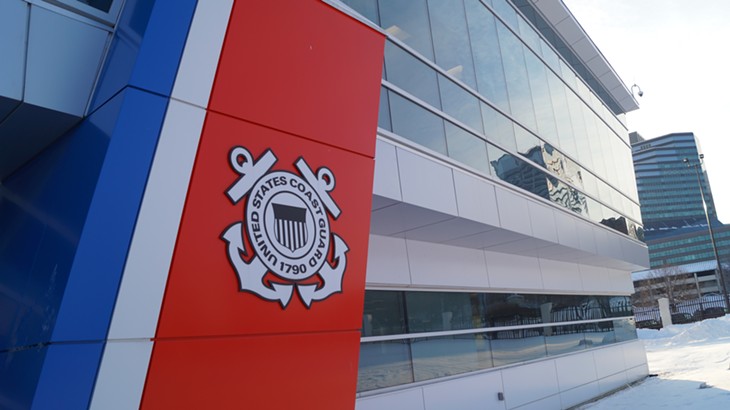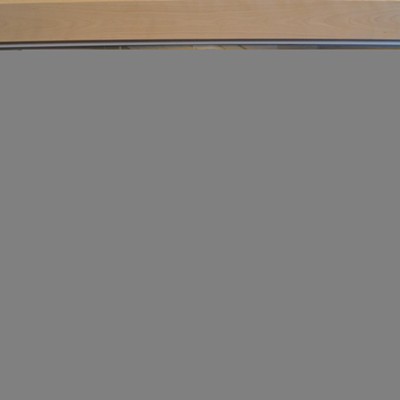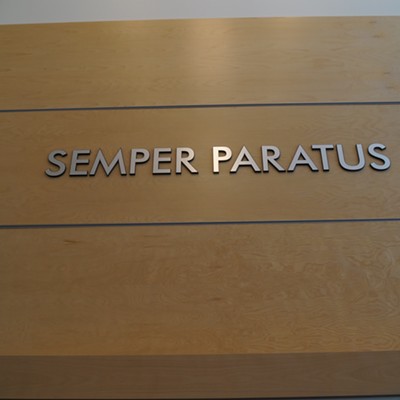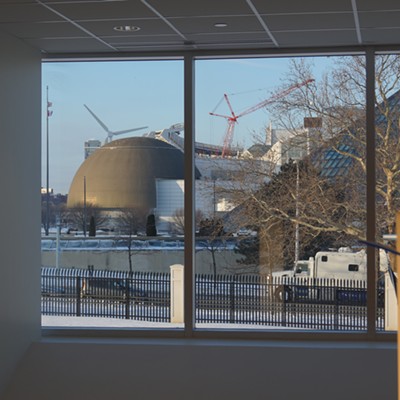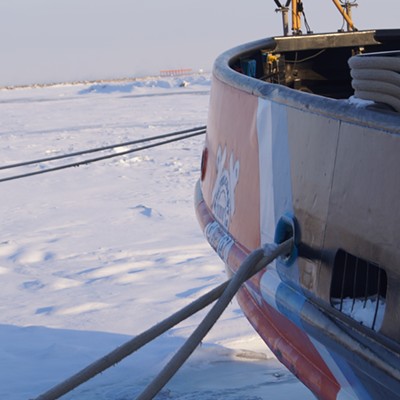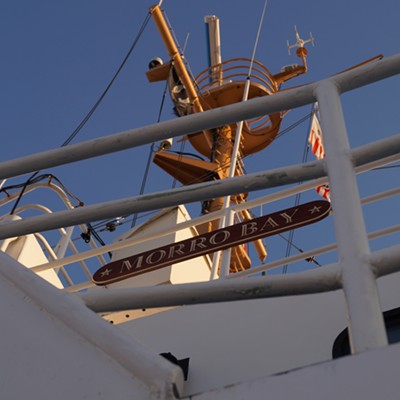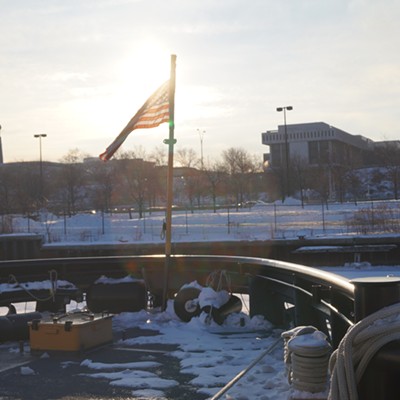BRASH ICE: Conglomerations of small cakes and chunks from other ice formations, coalesced and refrozen into irregular shapes, often with sharp projections.
We’re underway, eight nautical miles or thereabouts into the solid white mass of what I’ve been assured is Lake Erie. But it may as well be 8 trillion nautical miles and it may as well be Neptune, because from up here on the bridge of the USCG Morro Bay (WTGB 106), an icebreaking tug, the view is that of a deep-galactic wasteland.
Our speed right now is 0.0 knots, which for the uninitiated means we’re stopped, squatting in the ice like a hypothermic otter. It’s early February, and the Great Lakes are 88-percent covered in ice. Lake Erie, where we’re now stalled, is the smallest and shallowest of the lakes and has reached a staggering 96-percent coverage. “Knot,” by the way, is the maritime abbreviation for “nautical miles per hour.” The nautical mile is slightly longer than a standard land mile, measuring 2,000 yards compared to 1,670.
For the record, there is nothing visibly nautical about our current location.
We’re immobilized because an oil leak has sprung from a beveled injector in one of the ship’s two huge diesel engines. I’ve been warned that the repairs are both time-consuming and mechanically complex. Initial ETR was radioed as one hour but has since been broadly amended to “two or two-and-a-half.” It’s a little after 1100 hours and we are bound, the 15-man Coast Guard crew and I, at the opposite of breakneck speed, for a media junket to Algonac, Mich., after which I am to be jettisoned and the crew is to commence an ice breaking mission of terrific regional and commercial urgency. Only now, maybe not.
Moments ago, the crew had joked that nothing could bring a Coast Guard cutter back to port. This news was received with managed anxiety by Seaman Messina, a fresh-faced Boatswain’s Mate whose Corvette, he’d just been texted, was illegally parked in front of his apartment building and had been hit. He wanted to know if there was any chance the leak might bring the Morro Bay back home so he could deal with it in person. Executive Officer Dan Swaim gently said no way.
FS2 Adams tells me in the galley a while later that “nine times out of ten” these oil leaks get repaired. “But they’re old ships,” he says, “the whole fleet. It’s not a question of if they’ll break but when.”
Up on the bridge, Swaim and Captain Kenny Pepper are wearing the two-piece blue uniforms and polished black boots of everyone on board. The electrician-types, “Firemen” in Coastie parlance, are distinguished by helmets and orange jackets. Pepper and Swaim also carry coffee mugs, in the relaxed way that ship’s officers are often seen to be holding coffee mugs in movies , i.e. in a way which seems incompatible with a vessel that rattles migrainally while breaking ice and pitches and rolls upon higher seas. For now, they can do little but gaze at the vast whiteness and shake their heads while they wait for an update from the engineers. They are not looking so much as marveling at the ferocity and depth of the jagged expanse before them. I’ve been given to understand that it almost never gets this rough or this heavy at these bearings.
For some perspective, the trip from Cleveland to Pelee Island, north of Sandusky, typically takes about four hours in open water, traveling at speeds of 12-13 knots. But 15 minutes after unmooring, we’d already crunched to a halt, forced to reverse and then ram ahead again like a car doing that rocking technique as it maneuvers out of a parking spot after heavy snow. Our average speed through the gapless brash this morning has been just under 5 knots.
“I hope you brought clean underwear,” Captain Pepper joked early on. We were scheduled to be to Detroit by evening, but that’s looking less and less likely. The oil leak isn’t the Morro Bay’s first mishap of the day, and there is a growing sense -- not a fear, but an internal acknowledgement; a frustration, if anything -- that the ice does not intend to be conquered.
Through the bridge’s tinted windows, little crystallized teepees appear in tenement clumps as far as the eye can see. I’ll reiterate that what I’m looking at isn’t even abstractly recognizable as a body of water.
“It’s like ice crushed up in a blender,” Captain Pepper says, describing the brash. “Crushed up in a blender and then put in a freezer overnight.”
Swaim takes a sip of his coffee and murmurs to himself, not for the first time, “This is the worst I’ve ever seen.”
PANCAKE ICE: Predominantly circular pieces of ice from 30 centimeters to 3 meters in diameter, up to about 10 centimeters in thickness, with raised rims due to pieces striking against one another.
On the Monday morning when the Morro Bay unmoors, a 60-year-old man near Pelee has alerted the relevant authorities that he’s retracing some ancestral path from the United States to Canada and will be traversing the lake on foot. (The thing to take away there is that such a feat is possible).
“You could drive across,” MK2 Colby Bradford says over a cigarette while the Morro Bay’s still in port. “You could take a truck out if you wanted to.” It’s as if another option might be the Megabus. Bradford’s not bothering with gloves out here, though the Mercury hasn’t yet climbed to 10 degrees.
Petty Officer Walter “Sean” Vitou, an ops guy down at Cleveland’s E. 9th station, verifies later that among Lake Erie’s Western Islands, people commute by snowmobile across the water.
Turns out that percentage-wise, the winter of 1994 and the fabled winter of ’89 delivered a bit more total ice coverage. But stats are for almanacs. Pepper says the endurance of 2014’s winter -- Coast Guard vessels were breaking ice in early December -- and the recurring bouts of extremely low temperatures have made this season hostile in an unprecedented way.

